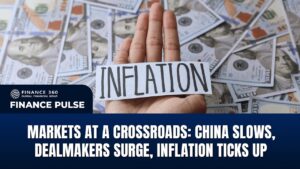A high-stakes meeting between U.S. President Donald Trump, Ukrainian President Volodymyr Zelensky, and European leaders ended Monday with cautious optimism and a potential path toward direct negotiations between Russia and Ukraine.
European leaders, including British Prime Minister Sir Keir Starmer, described the gathering as markedly friendlier than Zelensky’s last tense visit to the White House in February. The Ukrainian president himself called it their “best” meeting yet, contrasting it with the earlier clash when Trump and Vice President JD Vance publicly berated him for lacking “gratitude” for U.S. support.
This time, Trump even complimented Zelensky on his trademark black jacket, which had previously drawn criticism from right-wing media.
Path to Direct Talks
The central outcome was Trump’s announcement that he had spoken to Russian President Vladimir Putin to begin “arrangements for a meeting” with Zelensky.
“At the conclusion of the meetings, I called President Putin, and began the arrangements for a meeting, at a location to be determined, between President Putin and President Zelensky,” Trump said, later writing on Truth Social that “everyone is very happy about the possibility of PEACE for Russia/Ukraine.”
German Chancellor Friedrich Merz told reporters that Putin had agreed to a bilateral meeting with Zelensky “within the next two weeks,” though no date or venue has been confirmed. In Moscow, Kremlin aide Yuri Ushakov struck a cautious tone, saying only that it was “worthwhile” to “explore the possibility of raising the level of representatives” in negotiations.
Zelensky, speaking to reporters outside the White House, confirmed he was “ready” for a bilateral with Putin, despite the Russian leader’s invasion of Ukraine that has killed tens of thousands.
The war remains locked in a bloody stalemate despite limited recent Russian advances. Trump’s own summit with Putin last week had failed to produce a ceasefire, intensifying U.S. pressure on Kyiv to consider concessions.
Security Guarantees at the Core
Another key development was the discussion of security guarantees for Ukraine. Trump said they would be “provided by the various European Countries, with a coordination with the United States of America,” adding that Putin had agreed to the principle while still ruling out Ukraine’s accession to NATO.
NATO Secretary-General Mark Rutte called the meeting “very successful,” saying Trump had helped “break the deadlock.” He emphasized that “today was really about security guarantees, the US getting more involved there, and all the details to be hammered out over the coming days.”
The Financial Times, citing a leaked document, reported that Ukraine had agreed to buy $100 billion of U.S. weapons financed by Europe in exchange for U.S. guarantees. Zelensky later described the package as $90 billion and said the terms would be formalized within 10 days.
European Caution
The presence of European leaders, from France, Germany, Italy, Finland, and the European Commission, alongside NATO officials, was widely seen as a show of support for Zelensky but also a hedge against Trump’s unpredictable approach.
In the run-up to the meeting, Trump had pressed Ukraine to give up Crimea and abandon its NATO ambitions, both longstanding demands from Moscow.
French President Emmanuel Macron urged tougher sanctions if Putin fails to move toward peace. Finnish President Alex Stubb warned that Putin was not “to be trusted.”
Chancellor Merz of Germany was more blunt, rejecting Russian demands for Ukraine to surrender the Donbas region. “The Russian demand that Kyiv give up the free parts of Donbas corresponds, to put it bluntly, to a proposal for the United States to have to give up Florida,” he said.
The delicate balance of diplomacy now rests on whether Putin and Zelensky will indeed meet face to face, and whether Trump’s push for security guarantees marks a breakthrough or simply another pause in a grinding war.






